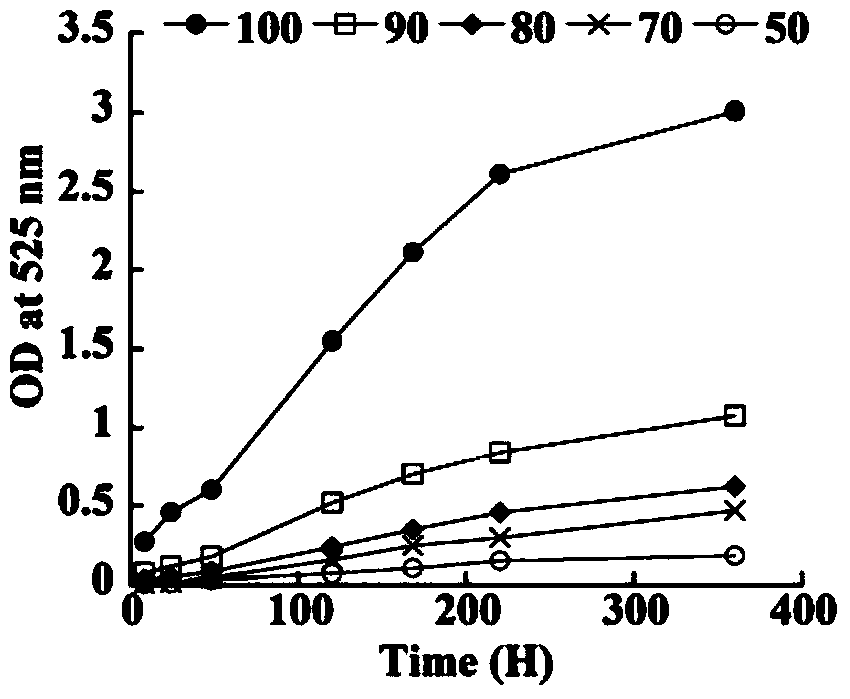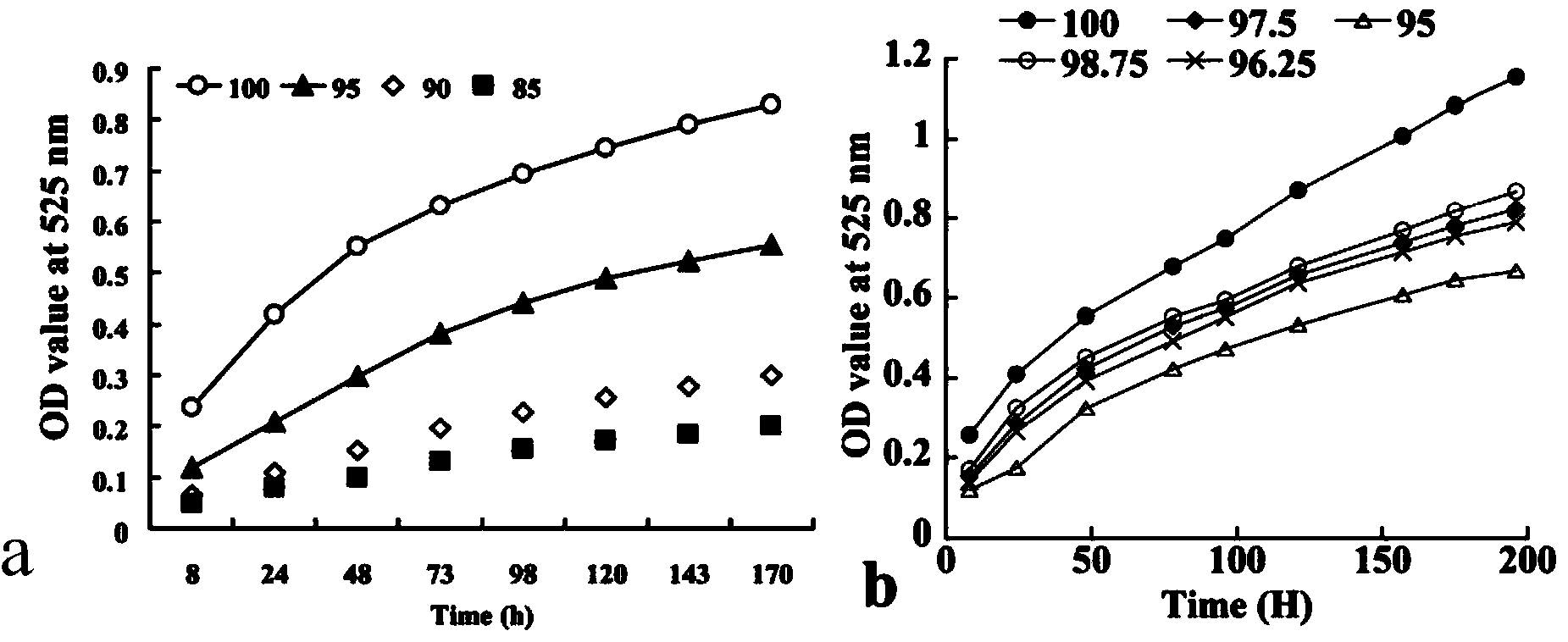Method for extracting red pigment from green pin needles
A technology of red pigment and pine needles, which is applied in tea treatment before extraction, chemical instruments and methods, azo dyes, etc., can solve the problems of less pine bark resources, inconvenience, unreported technology, etc., and improve the quality of pine needle tea , increase soup color, low cost effect
- Summary
- Abstract
- Description
- Claims
- Application Information
AI Technical Summary
Problems solved by technology
Method used
Image
Examples
Embodiment 1
[0028] The influence of the water content of embodiment 1 extraction time and extracting liquid etc. on extraction effect
[0029] The invention adopts 1% hydrochloric acid methanol to extract the red pigment of black pine (Pinus thunbergii Parl.). Studies have found that when leaching black pine needles with methanol hydrochloric acid, the initial extract is dominated by green pigments, and almost no red pigments are extracted (within 5 hours) ( figure 1 d). With the prolongation of the extraction time, the hydrochloric acid methanol solution gradually changed from blue-green to yellow-green. On the surface of pine needles ( figure 1 a) and endothelial cells ( figure 1 b) Red pigments gradually appear in the skin, and most of the red pigments produced at this time are adsorbed on the macromolecular fatty acid esters of the stratum corneum. As the extraction time continues to prolong, along with the decomposition of the extracted chlorophyll components under light (Feng et...
Embodiment 2
[0032] The influence of embodiment 2 pine needle moisture content on extraction effect
[0033] The influence of the moisture content of pine needles on the extraction effect is shown in Figure 4 and Figure 5 , Figure 4 The data showed that the amount of red pigment extracted from dehydration treatment increased significantly, and there was an obvious linear correlation between the water content of pine needles and the absorbance of red pigment in the extract ( Figure 4 a). After the dried pine needles were rehydrated, compared with the control pine needles without drying treatment, there was no statistically significant difference in the red pigment extract ( Figure 4 b).
[0034] This test shows that the process of extracting pine needle red pigment with hydrochloric acid methanol is a process of gradual oxidation and polymerization, and the drying treatment of pine needles is beneficial to increase the extraction amount of pine needle red pigment. In addition, in ...
Embodiment 3
[0035] Embodiment 3 pine needle red pigment component analysis
[0036] Studies have shown that the red solution produced by continuous extraction of green pine needles in acidic methanol solution turns blue-purple after alkaline precipitation ( Figure 6 a-Ld, Figure 6 b-Ld), although the alkaline precipitate of the bark extract has a tendency to become lavender, its degree is much lower than that of pine needles ( Figure 6 a-Pd, Figure 6 b-Pd). This indirectly suggested that anthocyanins or anthocyanins were formed during the extraction of pine needles. Moreover, proanthocyanidins are easily converted into anthocyanins under acidic environmental conditions.
[0037] At the same time, the process of extracting pine needle red pigment with methanol hydrochloride in the present invention is a gradual oxidative polymerization process, and the colorless oligomeric proanthocyanidins are converted into reddish-brown high-polymeric proanthocyanidins through oxidative polymeri...
PUM
 Login to View More
Login to View More Abstract
Description
Claims
Application Information
 Login to View More
Login to View More - R&D
- Intellectual Property
- Life Sciences
- Materials
- Tech Scout
- Unparalleled Data Quality
- Higher Quality Content
- 60% Fewer Hallucinations
Browse by: Latest US Patents, China's latest patents, Technical Efficacy Thesaurus, Application Domain, Technology Topic, Popular Technical Reports.
© 2025 PatSnap. All rights reserved.Legal|Privacy policy|Modern Slavery Act Transparency Statement|Sitemap|About US| Contact US: help@patsnap.com



